FLOW-INDUCED VIBRATION - TURBOMACHINERY
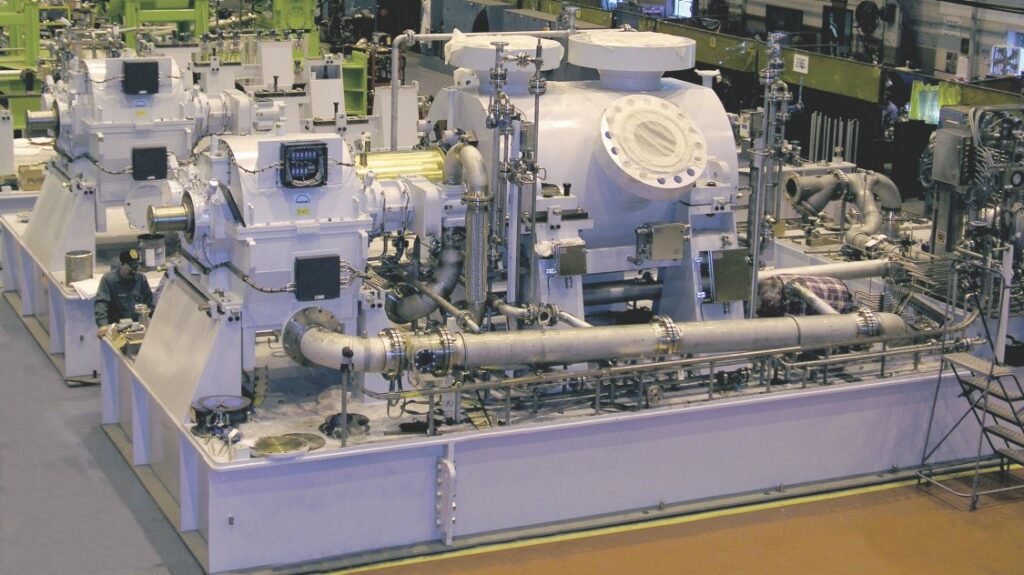
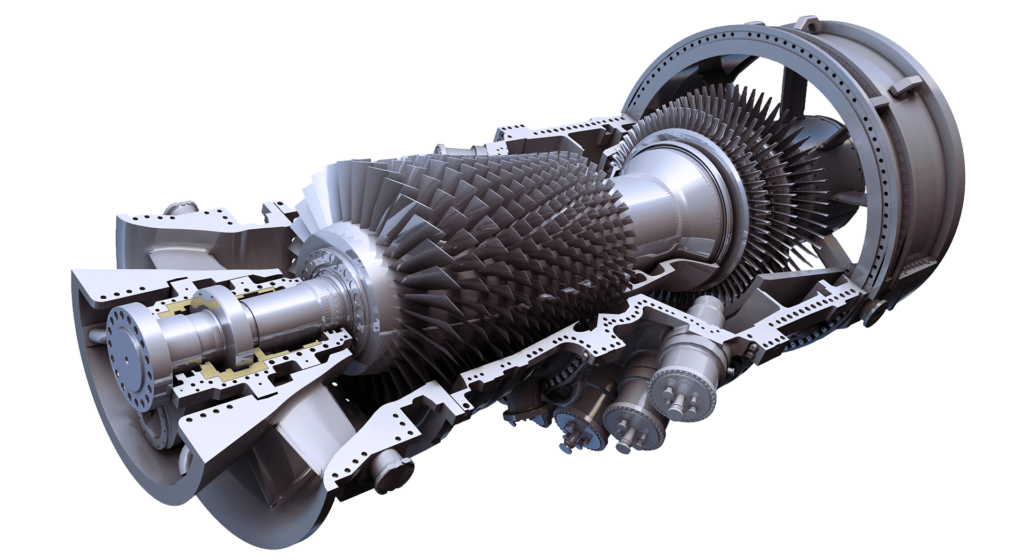
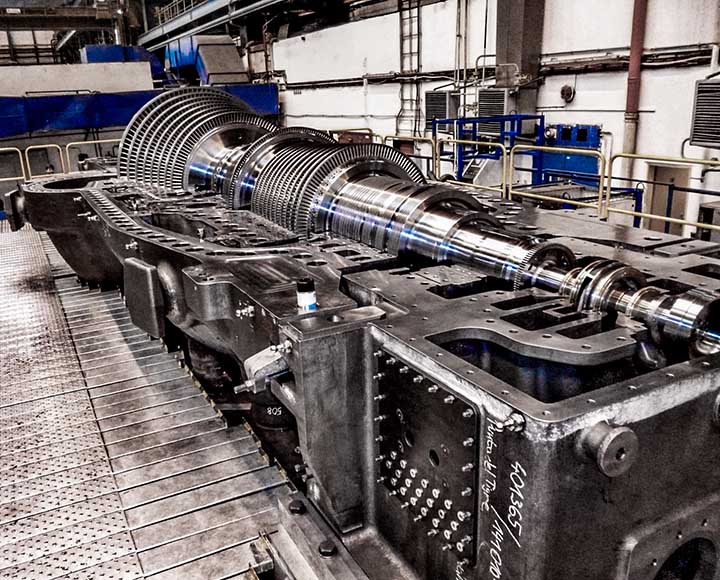
CENTRIFUGAL COMPRESSORS
GAS TURBINES
SPECIAL STEAM TURBINES
Flow-induced vibration refers to the phenomenon where fluid flow interacting with structures can cause vibrations and mechanical stresses. This is particularly relevant in turbomachinery, such as centrifugal compressors, gas turbines, and steam turbines, as well as in piping connections close to these machines. Flow-induced vibration can have significant implications for reliability, safety, efficiency, and performance in the operation of turbomachinery.
The primary cause of flow-induced vibration is the interaction between the fluid flow and the structural dynamics of the equipment. When the fluid passes through the machine, it generates forces that can induce vibrations in the components. These forces can be caused by various factors, including flow turbulence, pressure fluctuations, vortex shedding, and fluid-structure interaction effects.
In the oil and gas industry and power generation plants, flow-induced vibration is particularly relevant due to the high flow rates, pressures, and temperatures involved in these processes. The complex fluid dynamics and large-scale systems in these industries make turbomachinery more susceptible to flow-induced vibrations. Additionally, the presence of impurities in the fluid, such as solid particles or liquids with different densities, can further exacerbate the vibration effects.
The critical aspects related to flow-induced vibration in turbomachinery and piping connections include:
Fatigue failure: Repeated vibrations can cause fatigue damage to the equipment, leading to cracks and eventual failure of critical components. This can compromise the reliability and safety of the machinery.
Performance degradation: Flow-induced vibrations can disrupt the smooth operation of turbomachinery, leading to reduced efficiency and performance. Vibration-induced losses can affect the overall energy conversion efficiency and increase operating costs.
Mechanical wear and damage: Vibrations can cause rubbing, fretting, or impact between components, resulting in mechanical wear and damage. This can lead to increased maintenance requirements, downtime, and decreased operational lifespan.
Increased stresses: Flow-induced vibrations can induce additional mechanical stresses on components, exceeding their design limits. This can lead to premature failure and compromise the structural integrity of the equipment.
Noise and vibration transmission: Vibrations generated by turbomachinery can propagate through the piping system, causing noise and vibration issues in the surrounding environment. This can impact the comfort of personnel working near the equipment and affect nearby sensitive equipment or structures.
To mitigate the effects of flow-induced vibration, various measures are employed, including:
Structural design optimization: Turbomachinery components can be designed with proper stiffness, damping, and natural frequencies to reduce the susceptibility to vibrations.
Vibration monitoring and analysis: Continuous monitoring of vibrations allows for early detection of potential issues and enables proactive maintenance and remedial actions.
Damping and isolation techniques: Dampers, isolators, and vibration-absorbing materials can be employed to reduce the transmission of vibrations and minimize their impact on equipment and surrounding structures.
Computational fluid dynamics (CFD) analysis: Advanced numerical simulations can be performed to study fluid-structure interactions and identify potential vibration sources and critical locations.
By addressing flow-induced vibration concerns, the reliability, safety, efficiency, and performance of turbomachinery, including centrifugal compressors, gas turbines, and steam turbines, can be improved, ensuring smooth and trouble-free operation in oil and gas industry and power generation plants.
LIMITATIONS IN ENGINEERING & DESIGN FOR FLOW-INDUCED VIBRATION IN TURBOMAHINERY
Here are the key limitations and their effects:
Complex fluid dynamics: The fluid flow inside turbomachinery is complex and often difficult to model accurately. The interactions between the fluid and the structural components can lead to unpredictable vibration behavior. This complexity makes it challenging to design systems that completely eliminate flow-induced vibrations.
Uncertain operating conditions: Turbomachinery operates under a wide range of operating conditions, including different flow rates, temperatures, and pressures. Flow-induced vibrations can vary significantly based on these conditions, making it difficult to predict and address potential vibration issues during the design phase.
Non-linear effects: Flow-induced vibrations often exhibit non-linear behavior, which makes their analysis and prediction more complex. Non-linear effects can arise from fluid-structure interactions, changes in system dynamics, and varying boundary conditions. These effects can lead to unexpected vibration amplitudes and frequencies.
Manufacturing and assembly variations: Variations in manufacturing tolerances and assembly processes can affect the natural frequencies and damping characteristics of turbomachinery components. These variations can lead to changes in the susceptibility to flow-induced vibrations, making it challenging to achieve consistent performance across different machines.
Material limitations: The choice of materials for turbomachinery components is crucial in addressing flow-induced vibrations. However, material limitations, such as temperature restrictions, fatigue strength, and corrosion resistance, can impact the ability to mitigate vibrations effectively. In some cases, compromises in material selection may be necessary, affecting the overall vibration performance.
Retrofitting challenges: Retrofitting existing turbomachinery to address flow-induced vibration issues can be challenging. Modifying or adding vibration control measures to already operational equipment may be complex and costly. Retrofitting efforts must carefully consider the existing system constraints, space limitations, and operational requirements.
These limitations affect the reliability, safety, efficiency, and performance of turbomachinery in several ways:
Reliability: Flow-induced vibrations can accelerate fatigue failure and reduce the operational lifespan of components. Unaddressed vibrations can lead to unexpected equipment downtime, unplanned maintenance, and increased failure risks.
Safety: Vibrations can compromise the structural integrity of turbomachinery, leading to catastrophic failures. This can pose risks to personnel safety, nearby infrastructure, and the environment.
Efficiency: Flow-induced vibrations can degrade the efficiency of turbomachinery by increasing energy losses, impeding smooth fluid flow, and reducing the overall performance of the equipment.
Performance: Vibrations can cause additional stresses on rotating parts, resulting in increased mechanical wear, decreased performance, and compromised operational stability. Vibrations can also impact the precision of measurements and control systems.
To mitigate the limitations associated with flow-induced vibration, engineers and designers employ various strategies, including advanced numerical simulations, experimental testing, optimized designs, material selection, and vibration monitoring systems. These approaches aim to minimize vibration levels, ensure safe and reliable operation, and enhance the overall performance of turbomachinery in the oil and gas industry and power generation plants.
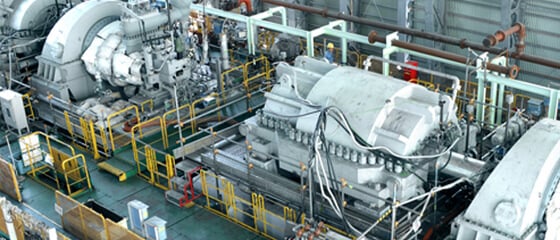
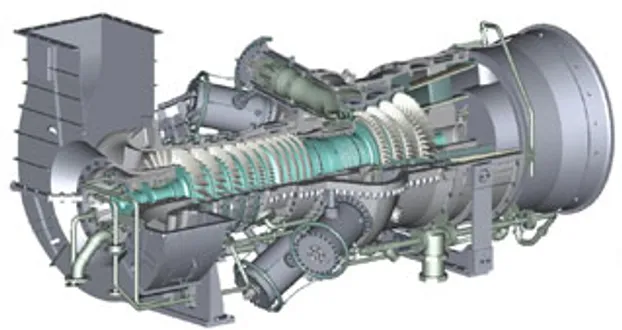
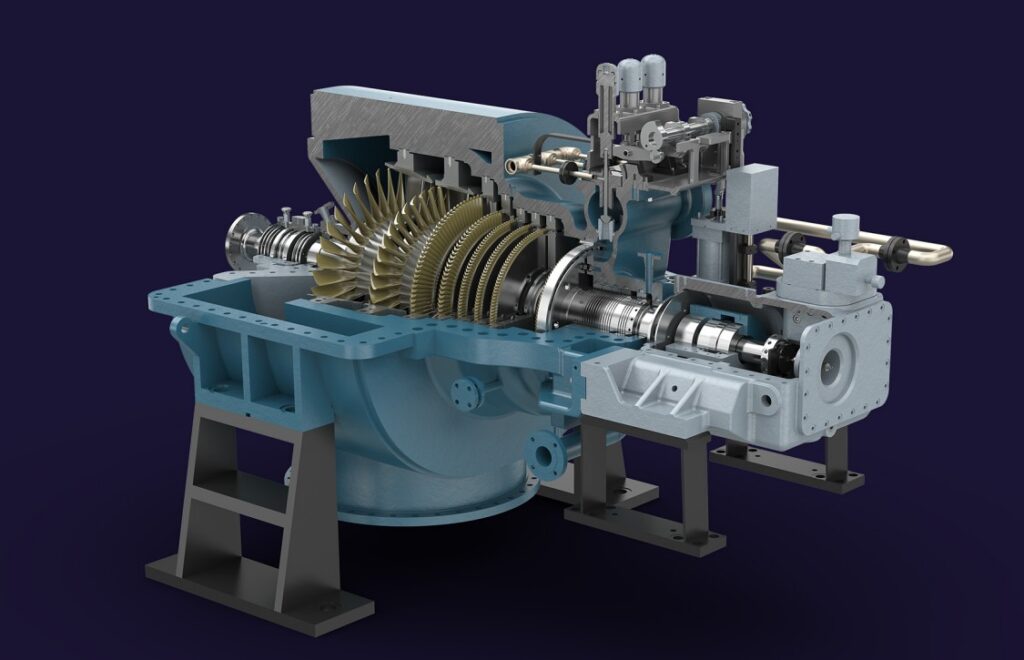
WHY, WHERE, WHEN, WHAT, WHICH, HOW IT OCCURS FLOW-INDUCED VIBRATION IN TURBOMACHINERY
- Why does flow-induced vibration occur? Flow-induced vibration occurs because of various factors:
Fluid turbulence: Turbulent flow generates random pressure fluctuations and vortices, which can excite vibrations in the equipment.
Vortex shedding: When fluid flows past bluff bodies or irregularities in the flow path, vortices are shed alternately from either side, creating oscillating forces that induce vibrations.
Fluid-structure interaction: The interaction between the fluid flow and the structural components of turbomachinery can lead to vibrations. The fluid forces can cause the structure to vibrate, while the structural response affects the fluid flow patterns.
- When and where does flow-induced vibration occur? Flow-induced vibration can occur during various operating conditions and at different locations:
High flow rates: Higher flow rates result in increased fluid forces, which can lead to higher vibration levels.
Transient conditions: Rapid changes in operating conditions, such as start-up, shutdown, or flow rate variations, can induce flow-induced vibrations.
Piping connections: Vibrations can occur in the piping connections close to turbomachinery due to pressure fluctuations, flow instabilities, or mechanical interactions between the pipe and the equipment.
Rotor-stator interactions: Flow-induced vibrations can occur at the interfaces between rotating and stationary components, such as rotor-stator cavities or blade-passing frequencies, resulting in vibration amplification.
- What are the critical aspects and limitations related to flow-induced vibration? The critical aspects and limitations of flow-induced vibration in turbomachinery include:
Fatigue failure: Repeated vibrations can lead to fatigue failure of components, requiring careful design to prevent excessive stress levels.
Uncertainty in predicting vibration behavior: Flow-induced vibrations can exhibit complex and non-linear behavior, making it challenging to accurately predict and mitigate vibrations during the design phase.
Material limitations: Material properties, such as fatigue strength, temperature resistance, and corrosion resistance, can limit the effectiveness of vibration mitigation strategies.
Manufacturing and assembly variations: Variations in manufacturing and assembly processes can lead to different vibration characteristics among similar equipment, requiring careful quality control measures.
- How does flow-induced vibration affect reliability, safety, efficiency, and performance? Flow-induced vibration has significant effects on turbomachinery operation:
Reliability: Excessive vibration can accelerate fatigue failure, leading to unexpected downtime, increased maintenance requirements, and reduced equipment lifespan.
Safety: Vibrations can compromise the structural integrity of turbomachinery, posing risks to personnel safety, nearby infrastructure, and the environment.
Efficiency: Flow-induced vibrations can increase energy losses, disrupt fluid flow patterns, and reduce overall equipment efficiency and performance.
Performance: Vibrations can impact the precision of control systems, affect measurement accuracy, and lead to additional mechanical wear, reducing operational stability and performance.
To mitigate these effects, engineers employ various strategies such as advanced numerical simulations, experimental testing, optimized designs, material selection, and vibration monitoring systems to minimize vibrations, enhance reliability, ensure safe operation, and improve the efficiency and performance of turbomachinery in the oil and gas industry and power generation plants.
PROCEDURES, ACTIONS, STUDIES, ANALYSIS, MITIGATION, RECOMMENDATIONS ABOUT FLOW-INDUCED VIBRATION IN TURBOMACHINERY
- Procedures and Actions:
Vibration monitoring: Implementing a comprehensive vibration monitoring system allows for continuous monitoring of vibration levels in turbomachinery. This helps in detecting any deviations from normal operation and enables timely actions to address potential issues.
Maintenance and inspection: Regular maintenance and inspection procedures should be established to identify and address vibration-related concerns. This includes inspections of components, checking for wear, and addressing any signs of fatigue or damage.
Condition-based maintenance: Implementing condition-based maintenance strategies can help detect early signs of flow-induced vibrations and take proactive measures to prevent failures. This includes using data from vibration monitoring systems and conducting periodic inspections and assessments.
- Studies and Analysis:
Computational Fluid Dynamics (CFD): Utilize advanced numerical simulations, such as CFD, to analyze fluid flow patterns, identify potential sources of vibration, and assess their impact on turbomachinery components.
Finite Element Analysis (FEA): Conduct FEA to evaluate the structural response of components to fluid-induced forces and determine critical vibration modes.
Modal analysis: Perform modal analysis to identify the natural frequencies and mode shapes of the equipment, allowing for the identification of potential resonance conditions and design modifications to avoid them.
- Mitigations and Recommendations:
Design optimization: Incorporate design features that minimize susceptibility to flow-induced vibrations, such as appropriate stiffness, damping, and dynamic characteristics. This includes optimizing blade profiles, reducing flow disturbances, and utilizing vibration isolation techniques.
Damping and vibration control: Implement vibration dampers, isolators, and vibration-absorbing materials in critical locations to mitigate vibrations and reduce their transmission to surrounding components.
Material selection: Choose materials with improved fatigue resistance, enhanced temperature capabilities, and resistance to corrosion and erosion to mitigate the effects of flow-induced vibration.
Experimental testing: Conduct experimental testing on scaled models or full-scale prototypes to validate numerical simulations, verify design modifications, and ensure vibration mitigation measures are effective.
Training and awareness: Provide training and awareness programs to personnel involved in the operation, maintenance, and design of turbomachinery to enhance their understanding of flow-induced vibration and its impact on reliability, safety, efficiency, and performance.
The critical aspects related to flow-induced vibration in the oil and gas industry and power generation plants include the potential for catastrophic failures, safety risks, reduced equipment lifespan, and decreased operational efficiency and performance. By implementing appropriate procedures, conducting thorough studies and analyses, and following recommended mitigations, the negative effects of flow-induced vibration can be minimized, ensuring improved reliability, safety, efficiency, and performance of turbomachinery, including centrifugal compressors, gas turbines, and special steam turbines.
